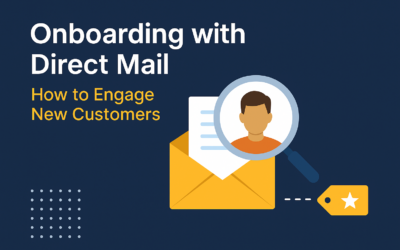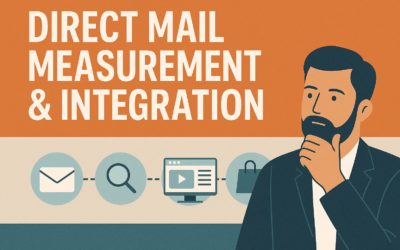Increasing lifetime customer value (LCV) is crucial for sustainable growth and profitability. As acquisition response rates continue to be challenged and cost per acquisition increases, it’s imperative to do everything you can to improve LCV. One powerful tool that can significantly contribute to increasing CLV is direct mail. By leveraging targeted and strategic direct mail campaigns, businesses can foster stronger relationships with their customers, encourage repeat business, and maximize long-term revenue.
There are really two big objectives or goals to increase lifetime customer value:
- How can you retain more customers?
- How can you get the customers you have to spend more?
Here’s how you can use direct mail to boost your customer lifetime value effectively.
1. Reduce first visit to second visit drop off
Do you know how many first time customers return for a second visit? If not, this is something you should analyze. Then develop onboarding tactics to drive return visits. These can include “welcome” messages, bounceback offers and more. Set these touches up as part of journeys and use triggered direct mail to accomplish this..
2. Develop a “risk of churn” model
Retaining customers is critical to boosting lifetime value, and one of the most effective ways to do this is by proactively addressing churn. Use RFM (Recency, Frequency, Monetary) analysis to identify customers at risk of leaving. This method segments customers based on how recently they’ve interacted with your brand, how often they make purchases, and how much they spend. Customers who score low in recency and frequency—or whose spending patterns have decreased—are prime candidates for churn interventions.
With these insights, you can design targeted direct mail campaigns to re-engage at-risk customers. For example, send a personalized mailer with a compelling offer, such as a special discount or exclusive reward, to encourage them to return. Tailor your messaging to acknowledge their previous interactions and emphasize how much you value their loyalty.
Triggered direct mail workflows can automate this process, ensuring timely and consistent outreach. By combining RFM analysis with automated direct mail, you can address churn risks effectively, turning potential losses into renewed loyalty.
2. Implement a Loyalty Program
Direct mail is an excellent medium for promoting a customer loyalty program. Use mail pieces to introduce your loyalty program, explain the benefits, and provide a tangible incentive to join. For example, you could send a card with a discount code or a free gift offer to encourage sign-ups. Once enrolled, continue to engage loyalty program members with exclusive offers and updates via direct mail to keep them coming back.
3. Re-Engage Lapsed Customers
One of the most critical uses of direct mail is re-engaging customers who have lapsed—those who have not interacted with your brand for a significant period. These lapsed customers are at risk of turning to competitors, making it crucial to re-capture their attention before they do.
4. Cross-sell and upsell
Direct mail is a powerful tool for cross-selling and upselling by leveraging customer purchase behavior to suggest additional products or upgrades. For instance, if a customer buys a printer, follow up with an offer for ink or paper; if they subscribe to a basic service, highlight the benefits of upgrading to a premium plan with a limited-time discount. Personalized recommendations, bundle offers, and tiered incentives can drive additional purchases while enhancing the customer experience. Automating these mailings based on triggers—such as recent purchases or customer segmentation—ensures your offers are timely and relevant, maximizing both revenue and customer satisfaction.



